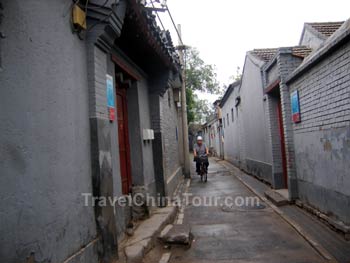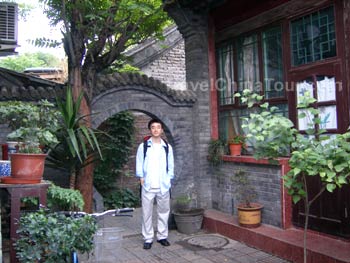Beijing is not only the capital city of China, but it is also the cultureal center of China. It consists of all the culture and heritage of the past ancient dynasties. The Beijing lifestyle is that of Northern China, consisting mainly of the Han culture. Tourists to Beijing can enjoy the world famous Peking Duck, watch Peking Opera, go shop in the bustling shopping districts like Wangfujing and Xidan, or experience the local culture by going on a Hutong Tour.
Beijing Hutong and square courtyards are the perfect examples showcasing the history of Beijing, its people, and their culture. The Hutong and the square courtyards comes with strong local flavor, and is one of Beijing's most well preserved traditional features.
Beijing Hutong Tour
Hutongs are one of the most unique features of Beijing culture and history. Hutong means narrow lanes, or narrow streets. The history of Hutong goes back to the Yuan Dynasty, when the Mogols first built Dadu (Great Capital) here. The word "Hutong" originated from the word "hottog", meaning "Well" in Mongolian.
Historically, hutong was also once used as the lowest level of administrative geographical divisions within a city in ancient China as in the paifang (牌坊) system: the largest division within a city in ancient China was a Fang (坊), equivalent to current day precinct. Each fang (坊) was enclosed by walls or fences, and the gates of these enclosure were shut and guarded every night. Each fang (坊) was further divided into several Plate or Pai (牌), which is equivalent to current day (unincorporated) community. Each pai (牌), in turn, contained an area including several hutongs, and during Ming Dynasty, Beijing was divided into a total of 36 fangs (坊). However, as the ancient Chinese urban administration division system gave way to population and household divisions instead of geographical divisions, the hutongs was no longer used as the lowest level of administrative geographical division and was replaced with other means.
- Souce: Wikipedia

Beijing Hutong - Narrow streets.
Hutong and Siheyuan (Square Courtyards)
The Hutongs in Beijing are formed by lines of Siheyuan, which are traditional Chinese residences with courtyards, that are built in a square shape. Neibourhoods are formed by joining many Siheyuan together, and the narrow street dividing the Siheyuan is the Hutong.
According to historical records, such residences were first built during the Han Dynasty, and had improved through the successive following dynasties including the Yuan, Ming, and Qing Dynasties. A Siheyuan consists four single level buildings on four sides - north, east, south, west. There is a courtyard in the middle of these houses, and a square wall encloses the entire structure. The walls were constructed using bricks, and roofs made of tiles.

Inside the courtyard of a Siheyuan at Beijing Hutong.
These Siheyuan were built in large, medium, and small sizes, and were built in accordance with a strict set of rules, where one could tell if a Siheyuan belonged to a common person, or the powerful and rich.
Within these square courtyards, the rooms facing south were better than the other rooms. They are usually reserved for senior members of the family. Rooms facing east and west and for junior members of the family. Women lived in the inner courtyard, and guests and male servants lived in the outter courtyard.
If you'd like to read more about Beijing Hutong, read about my personal tour of Beijing Hutong here. |